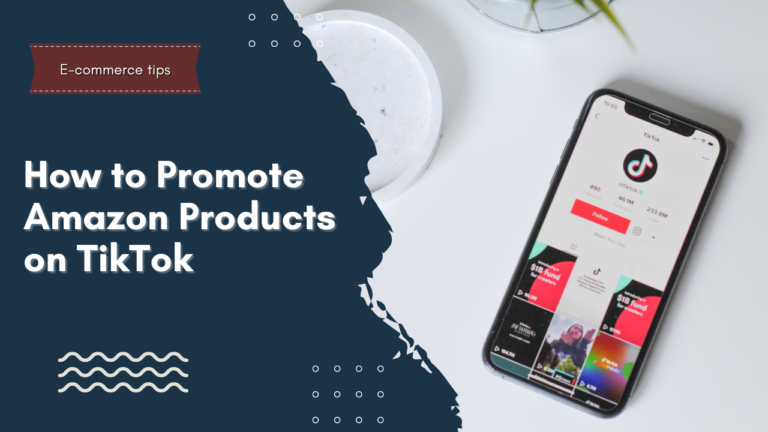Amazon vs Shopify: Which Platform is Better?
As an e-commerce seller, one of the most important decisions you’ll make is choosing the right platform to sell your products. There’s a great debate when choosing which platform to sell on, and this is Amazon vs Shopify. Both platforms give you access to a broad audience and provide you with the necessary tools to succeed in the e-commerce space.
But the way these two platforms function is different from one another. Should you go with Amazon that has an established customer base? Or do you go with Shopify and build your e-commerce store? This article will discuss the main differences between Amazon and Shopify. That way, you can choose the right platform to sell your products and build a successful e-commerce business.
Or, you may end using both, as many of our clients do. In that case, you get the best of both worlds, but also the challenges of both. At elsat this way you’ll go into it with your eyes wide open and ready for the pros and cons!
1. Ease of use
When selling products online, you want the platform you’re using to be intuitive and easy to learn. Both Amazon and Shopify offer a quick onboarding process to set up an account and create product listings. You’ll find plenty of resources like videos, how-tos, and articles to familiarize yourself with how the platforms work.
But because Amazon and Shopify operate on a different scale, the learning curve for each will be a unique experience. With Amazon, you need to learn how to manage an Amazon Seller Central database. Here, you fill out details about your product like the name, identification number (ASIN), listing copy, and more.
There’s a lot of form-filling involved when starting with Amazon. But since the platform is a marketplace on its own, you don’t have to worry about building a website. You prepare all the information you need to start selling products.
Shopify is entirely different because you’re creating an online store from scratch. While that may sound like a daunting task, Shopify provides templates and other tools to set up your website quite easily. With Shopify, you need to learn how to create web pages and customize themes. The advantage to this is that you can set up your website exactly how you want it, which is excellent for building a unique brand image.
In terms of ease of use, Amazon comfortably wins this one.
2. Product presentation
Product presentation is essential when choosing a platform to sell your products on. With Amazon, there’s not much you can do to alter how you present your products. This may be a good or a bad thing, depending on how you look at it. Your storefront will carry that Amazon look that many customers are familiar with, making it suitable for sales and consistency. The downside is that differentiating your listings from the competition can be challenging, so you need to optimize your listings to land on top of the search results.
In contrast, Shopify lets you build your storefront according to how you see fit. You can create a bespoke shopping experience for your customers and present your products in a way that stands out from the competition. If you’re looking to recreate a buyer persona in your store, then Shopify is the way to go. The downside here is that it takes a bit of experimentation to get right, which requires time and effort on your end.
But overall, when it comes to product presentation, Shopify wins this category hands-down.
3. Shipping
We can’t talk about e-commerce platforms without mentioning shipping. For the most part, Amazon and Shopify do an excellent job when it comes to transporting goods. Amazon offers you two ways to ship out your products, and these are Fulfillment by Merchant (FBM) or Fulfillment by Amazon (FBA).
Fulfillment by Merchant means you’re in direct control of shipping your products. That means you manage the inventory, packaging, and returns by yourself. If you sell low-volume, low-profit margin products, then FBM is an excellent choice.
Fulfillment by Amazon is when you let Amazon handle the storing, packing, and shipping of your products. There are a couple of benefits to FBA, including cheaper shipping fees, lightning-fast shipping (Amazon Prime), and hassle-free product storage.
In regards to Shopify, you can do the same thing. You can either fulfill the shipping yourself or outsource it to a third-party fulfillment service. The great thing about Shopify is that you can control your shipping rates and set your own rules. For example, your shipping rates may vary depending on the item’s weight or whether the product will be shipped domestically or internationally.
Let’s touch up a bit on dropshipping. With Shopify, you can connect with hundreds of dropshipping suppliers, making it the ideal choice if you want to do dropshipping. In contrast, Amazon prohibits you from buying products from other retailers and having them ship directly to your customers. They also take a percentage of the sales, thus lowering your profit margins from dropshipped items.
Both Amazon and Shopify offer excellent shipping solutions. If you prioritize efficiency and cost-effectiveness, go with Amazon’s FBA. On the other hand, go with Shopify if you want more control over your shipping (and do drop shipping).
4. Customer base
One clear advantage that Amazon has over Shopify is the well-established customer base. Amazon has more than 200 million Amazon Prime subscribers, with 147 million based in the US alone. Essentially, the platform opens up an opportunity to sell your products worldwide. With Shopify, you need to market your products to generate sales constantly. But that doesn’t mean you’ll automatically sell more on Amazon than you would on Shopify.
Because Amazon is a global brand, the competition in the platform is incredibly high. With millions of sellers vying for the attention of their customers, the market is full of very competitive products. It would be best to find a niche where you face the least competition with the most buying potential, which can be hard to figure out for first-time sellers.
Shopify requires you to build your online visibility so that your products can reach your customers. Much effort is necessary to put your products on the map, like marketing, search engine optimization (SEO), and online advertising. It’s a time-consuming endeavor, but you can generate brand interest and get the ball rolling with your e-commerce store when you persist enough.
Overall, Amazon wins here thanks to its worldwide customer base.
5. Customer support
When choosing a platform to sell your products, you need to consider customer support as part of your overall decision. If you can’t take care of your customers, they certainly won’t be doing business with you in the future. Amazon doesn’t seem to list it as one of its main features regarding customer support. They don’t even promote their customer support team as part of the customer’s overall shopping experience.
Amazon focuses more on instructing customers and guiding them to resolve any particular issue instead of directing them towards customer service. Video tutorials, help pages, and community forums are examples of how Amazon handles customer concerns. Shoppers can still contact Amazon to address complex matters.
Shopify places a strong emphasis on customer assistance as they list it as a critical feature in all of their seller plans. You can contact their support team thru live chat, phone, and email to address customer issues and complaints. They also have support pages available in 20 different languages to cater to a broad audience.
You can also interact with the Shopify community for further assistance. All in all, Shopify’s customer support is a level above Amazon’s. If you want to prioritize this, then Shopify is the better choice.
Amazon vs Shopify: Which one’s better?
There’s not a one-size-fits-all solution when it comes to selling products online. To better understand which platform suits you best, you need to consider your needs as a seller. Amazon is more suited towards retailers who want access to the platform’s huge customers base. You can also do retail/online arbitrage with Amazon more accessibly than with Shopify.
Shopify caters to e-commerce sellers who want to build their brand and distinguish themselves from the competition. You can customize your website according to your liking, and the platform caters to drop shippers as well. Being able to cultivate your brand image is what Shopify is all about, and you may end up preferring that over Amazon’s platform.
You may be wondering, is it possible to sell on both Amazon and Shopify? The answer is a resounding yes! You don’t need to limit yourself to one e-commerce platform to experience success. As your business grows, it’s always a good idea to diversify your sales channels. You even have the option of integrating your Shopify store with your FBA inventory.
In the end, both Amazon and Shopify are excellent choices if you’re looking to start your e-commerce journey. Take the time to learn more about each platform and choose one that best meets your needs/requirements.
Proper bookkeeping is a must for an e-commerce company as it ensures your business is performing well financially. If you need expert and reliable bookkeeping services, our team is here to help. Fill out the form below, and we’ll get back to you as soon as possible.








